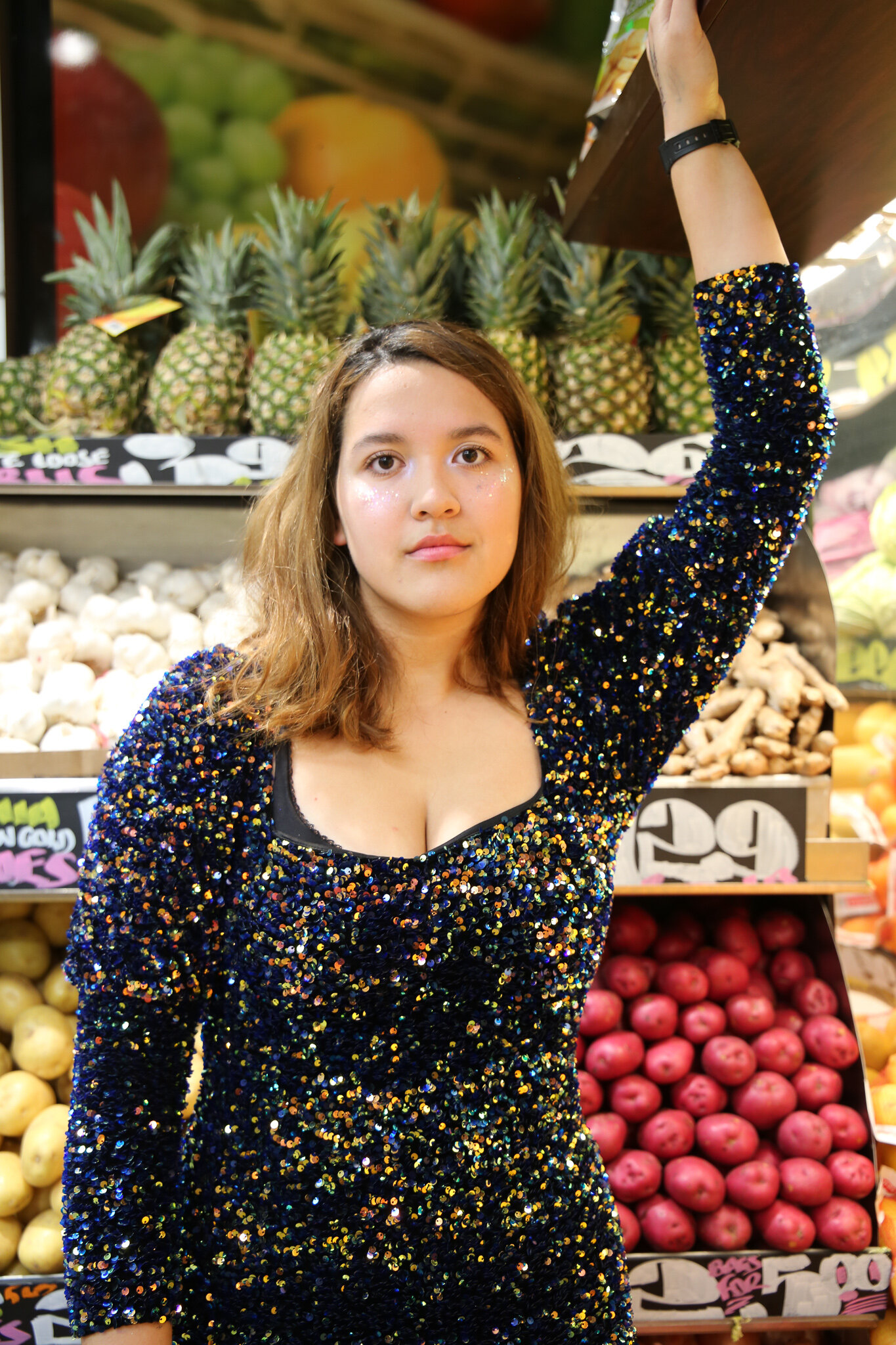
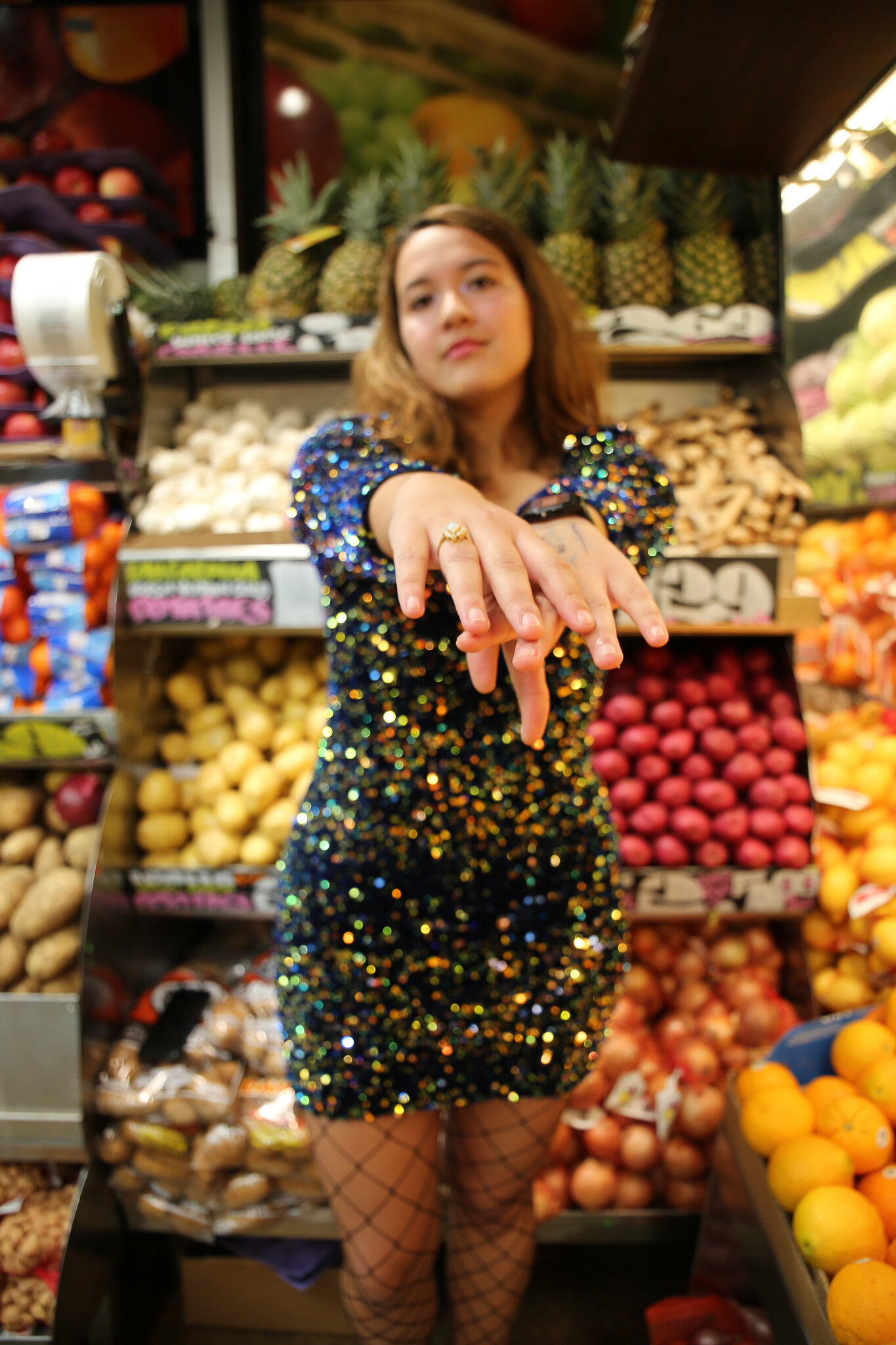
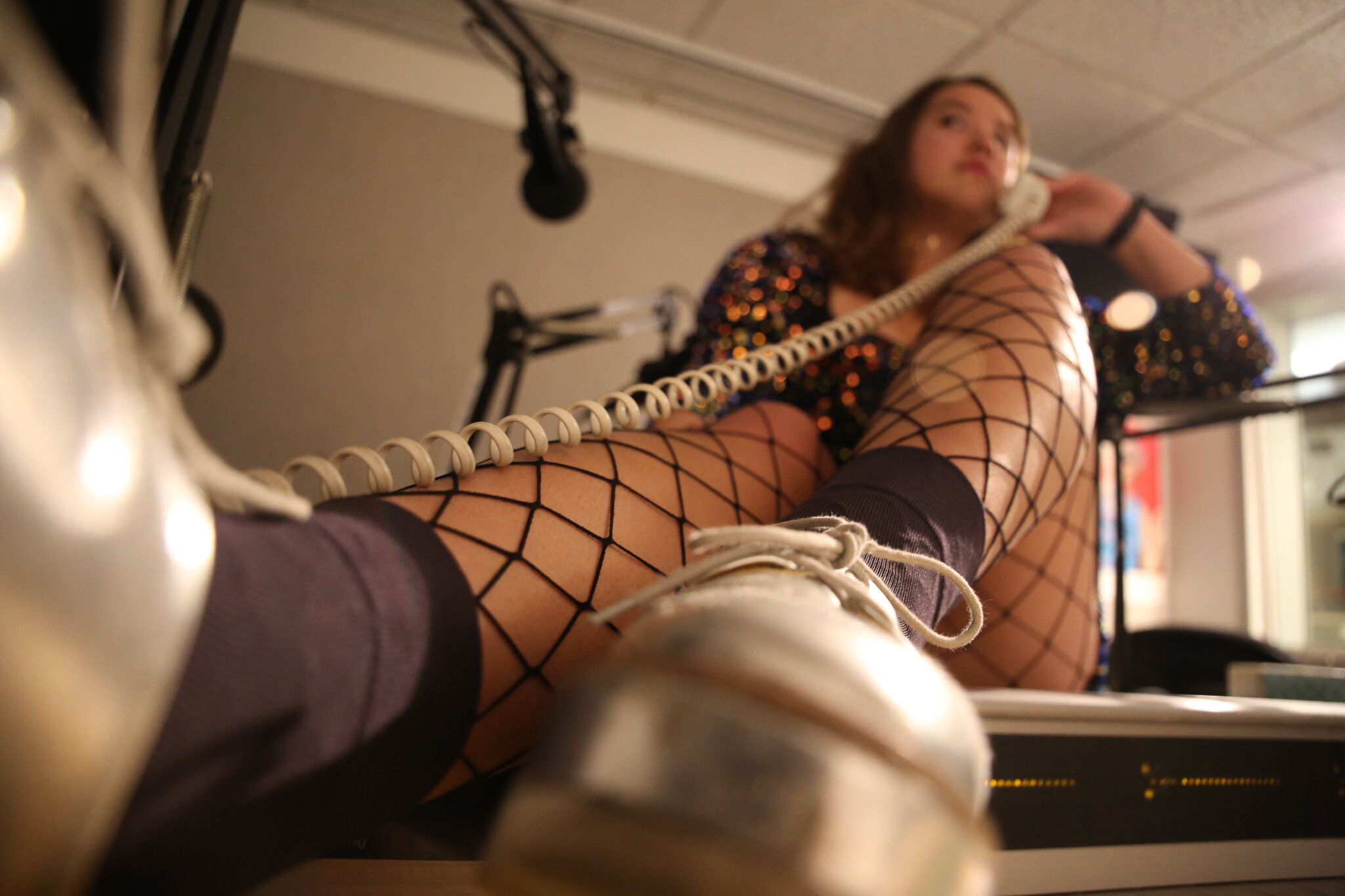
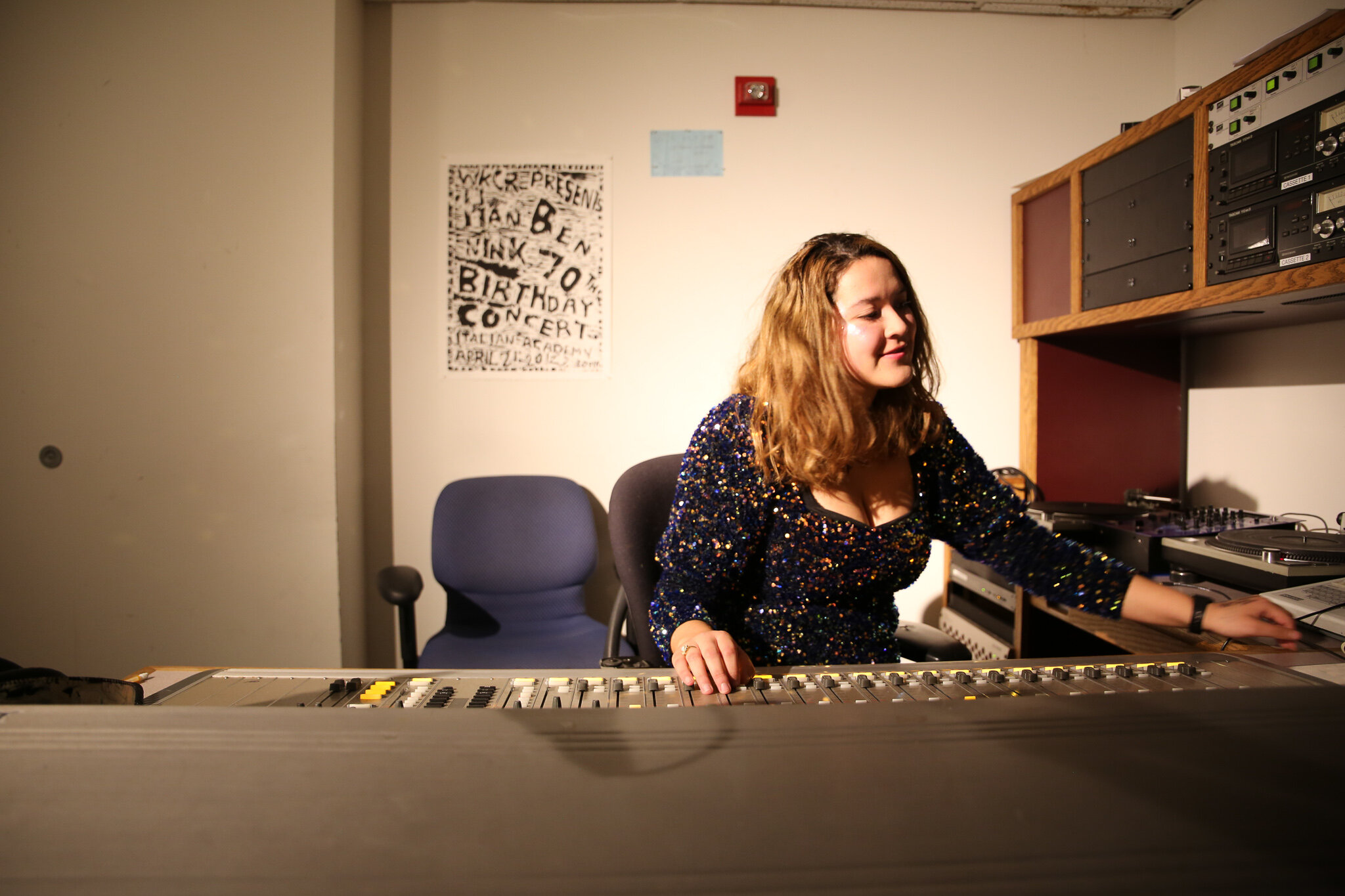
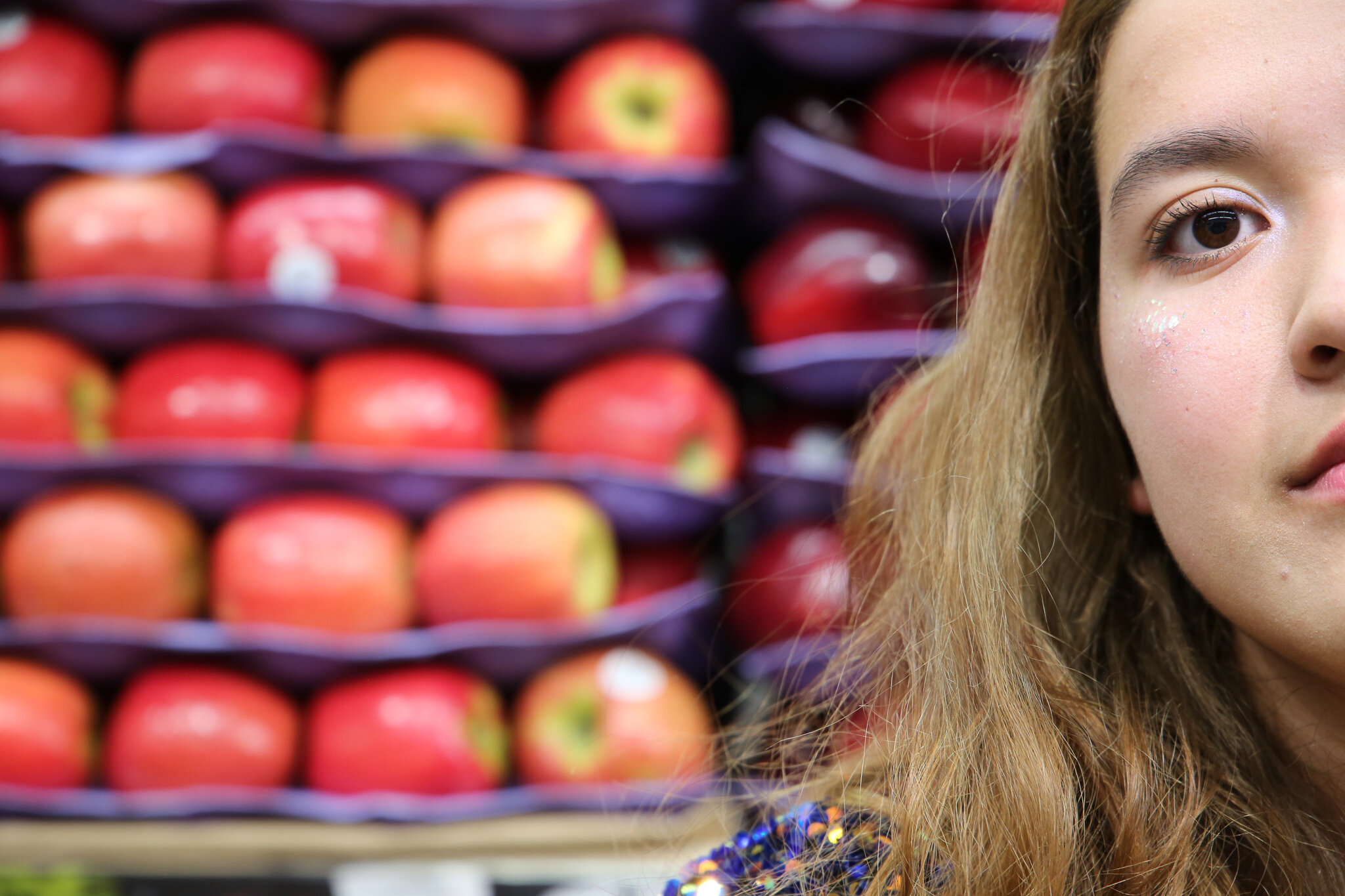
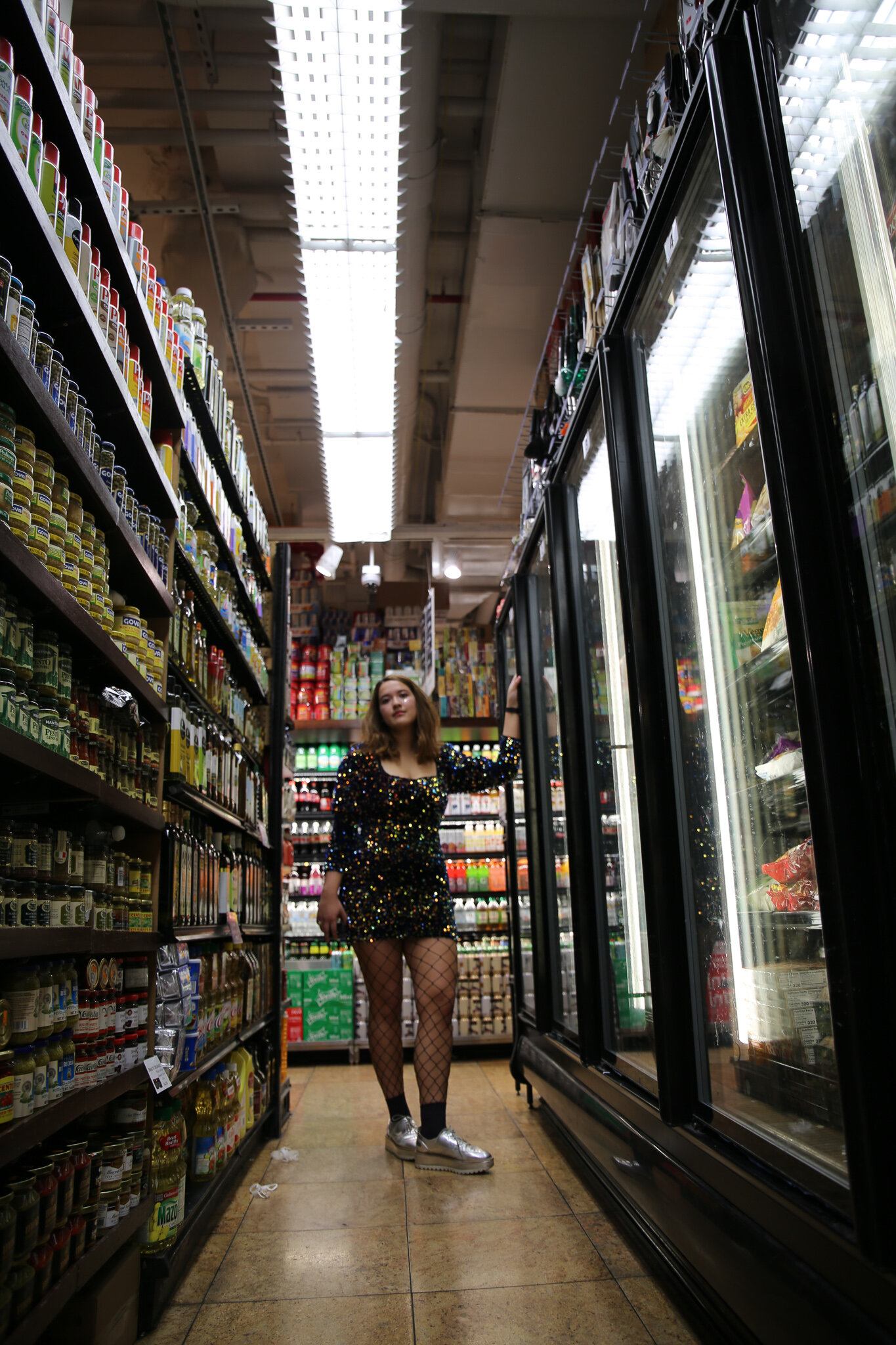
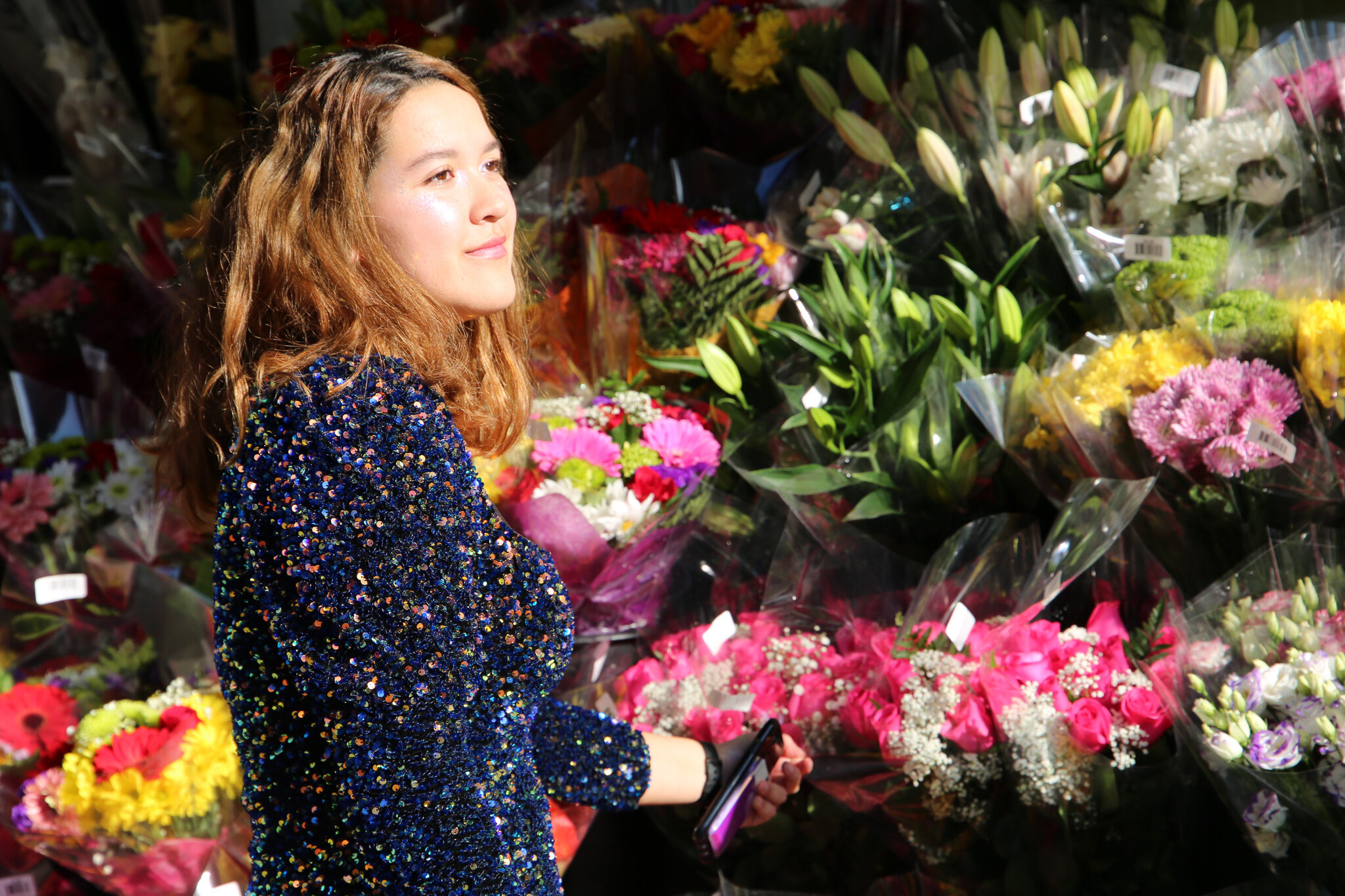
In conversation with Lorenzo Barajas
Photographed by Lola Lafia
Could you tell me a little bit about yourself?
I’m Mari, or Marisa. I am a junior in SEAS studying mechanical engineering. This past year I served as publicity director for WKCR-FM New York, and co-captain of Columbia Women’s Water Polo. I’m also involved in Columbia BlueShift, which is our undergraduate astrophysics society. I am a member of the Barnard Clay Collective, and I’m a tour guide with the Undergraduate Recruitment Committee. I’m a proud Mexican-American from Houston, Texas—and I am super excited to be a featured artist!
Could you describe your work’s aesthetic in five words?
I thought about this a little bit. I think it’s kinda hard to do, but I guess I can narrow it down to five words. And that would be noisy, vibrant, dynamic, coalescent, and playful.
Sick! So going back to your background in STEM—as a mechanical engineering student and an astrophysics researcher—how did you find art? How did your relationship with art begin?
I always kid of liked doing things with my hands. Being creative, things like that. One of my earliest memories of being super excited about something I made was when I was designing and making jewelry with my mom. I made this necklace when I was five, and I still wear it sometimes—I just love it so much. And I always sort of liked working with my hands and thinking, what if. And then trying to see if I could do it. At the same time, I was always really fascinated by science. In school, I just had this burning, undying curiosity. My very first science teacher, Ms. Kiley, told me that we’re all scientists— because we all ask questions. And I thought, well, I can’t stop asking questions. I guess that makes me a great scientist! I think now I’m really fascinated by the intersection of science and art, which I sort of see in engineering. I am really interested in finding creative solutions—to build the tools we need to answer all of these questions that we have. And that’s something that I’m super excited to be able to do in my research right now.
Yeah, I think a lot of people do sort of claim that there is an art to science. Do you think that there’s a reverse? Do you see a science in art form?
I would say yes, definitely. So speaking about the first relationship, the art that is in science—I do see that every day when I’m choosing how to visualize my data in a way that is aesthetically pleasing, but at the same time, communicates the results that I want people to understand from my work. And, you know, there’s an art in the technical, hands-on part of research. Whether that’s putting together the hardware assemblies, or pipetting, or whatever it is you’re doing that’s technical with your hands in your research.
At the same time, I think in engineering especially, I tend to associate the most elegant solution with simplicity. And I think that’s something that’s completely opposite from my art. I think minimalism in engineering is something that I value, but it’s something that I don’t necessarily see in my art. So in the reverse, with the science in art, I see it especially in two media that I use—I see it in ceramics and I see it in textile arts. In ceramics, especially when I’m working on the wheel, I’m sort of thinking about forces on a rotating object. I’m thinking about cross-sections of a rotated solid, just like [what] I think about in calculus. When I’m hand-building, I’m thinking about structural integrity and support, and whether what I’m doing is able to hold its own weight. I was recently talking with my friend Rachel, who’s a professional fiber artist, about the similarities between computer programming and fiber arts— especially knitting. I taught myself to knit when I was seven years old, and ever since I’ve been able to use different knitting techniques to do things other than just a straight knit stitch. I’ve been writing patterns—cable patterns and fair isle patterns and other things like that. And I see it as a form of object-oriented programming, where you see these objects and instance variables. It reads like a bunch of for loops. A lot of the first computer programs were actually written for weaving machines, so there is, I think, a very strong connection between the arts and sciences—and there is a presence of science in art.
Do you feel your art is working toward making science more accessible and palatable to people who maybe aren’t familiar with science? Or non-majors in general?
I would hope so. A lot of the work I’ve done is for BlueShift’s Arts & Astro Festival, which is this annual event that we put on to explore the beauty that there is in science. And I think there is great beauty in unveiling the secrets of the universe, and answering our most burning questions. I think especially in astronomy, a lot of what we see can be super visually appealing—but it gets clouded and buried under these differential equations and things like that. I like to bring science into my art just to remind myself that there’s a reason I’m asking these questions. Because I have a personal interest in knowing these things—because they’re so captivating, they’re so beautiful.
So, getting into how exactly you’re mixing science and art, I wanted to talk about one of your pieces, Screaming Interference, in particular.
Yeah, I had a lot of fun making this piece. It was also for Arts & Astro. I’ve been really interested in the idea of gravitational waves, and the way that the detection works. I wanted to make a piece that shows one small aspect of gravitational wave detection—and [those were] the first gravitational wave signatures that were picked up by the LIGO Livingston and Hanford observatories. So I’ve worked a lot with electroluminescent wire in the past, and I wanted to incorporate that into my work. I essentially took the gravitational wave signals and sculpted them in a slightly abstracted form in the electroluminescent wire. [I used] two different colors—one for Livingston and one for Hanford. And I sort of overlaid them in the same way that the gravitational wave signatures were overlaid, to confirm that it was a gravitational wave event and not just some sort of weird background noise that was happening at one observatory. I also wanted to play with reflection and dimension and color, so I sort of set it up as a tunnel with a mirror at the back end, and a sheet of tinted acrylic at the front end. I had these alternating electroluminescent wires going on and off. You could also look deep into one end of the tunnel and see their reflections—but in a different color, because of the tinted acrylic on the front.
It seems like distortion is a big aspect of your process. Is this distortion more tactile or digital?
I think a great deal of it starts with the physical, tactile distortion. I think it’s really cool that whatever physical process you do to the film that you’re shooting on is an irremovable part of the image that you’re capturing. And I think that’s really interesting. When I distort the film, I sometimes shoot on expired film, and I soak it in various household acids. Sometimes, for example, it’s an old disposable camera and the battery will have leaked into it already. Maybe I’ll add soap or lemon juice or something like that, and just see what that does to it. I’m not looking for any sort of effect in particular, I’m just sort of asking, “What happens if I do this?” From there, I let the results of that image sort of guide the rest of the process—which tends to be mostly collage, some physical cutting and pasting, and also some digital stuff. I like to mix a lot of my photos with some data visualization in Python that I think might be kind of fun to go with them.
Cool. So many of your photos tend to mix analog and digital technology. Do you feel that analog has a nostalgic value to you? Or do you feel that it evokes a different emotion than digital?
Yeah, I think so. Like I touched on a little bit before, I think the scratches and the wear and tear on the analog media we use is super fascinating. It just becomes a part of the piece. It’s kind of like rereading your own copy of your favorite book. The more you read it, the more it just sort of wears out—and you can see the love that’s gone into handling it. At the same time, I do think it’s really interesting to combine digital with analog. I almost feel like I’m making little cyborgs when I make art in this way.
You also work with mixtapes. Would you like to speak on those? What sort of sounds are you interested in?
Yeah. So I did mention I’m from Houston, Texas, and a favorite local legend of ours is DJ Screw. He is known for the development of his technique of playing with the speeds of different records when he sampled various, mostly local artists on his mixtapes—and created the ‘Chopped and Screwed’ style of mixing and cutting and pasting, and using different bits of sound and slowing them down. So I take a lot of inspiration from that. While some of my mixtapes are pretty traditional—in the way that you think of a mixtape on cassette—a lot of them experiment with the same kinds of things that DJ Screw did. So I like to sample things from underground 1990’s and 2000’s artists, especially from Houston. And just put things together in ways that I haven’t really seen before. But also, being at WKCR has exposed me to a lot of different ways that music can be put together. I wasn't familiar with New Music as a genre before I started WKCR, but now I think it’s interesting, especially the history of its technology. Some of my mixtapes take samples and inspiration from New Music, especially Computer Music from the 1970’s, and also samples from old nostalgic digital sounds. Even the sound of dial-up Internet, for example. I’m also building a synthesizer as my final project for a class I’m taking on sound, and I’d like to incorporate it on my mixtapes.
So going into your inspiration, is there any artist specifically—a musician, filmmaker, or someone who produces media of any kind—that you feel inspired by?
I think right now one of my biggest artistic inspirations is Susan Kare. She’s the graphic designer who worked on creating the original user interface for Apple computers. So she made the command symbol, and the smiling Mac, and the bomb, and the click symbol, and all of that. I just think it’s so interesting how she was able to take a 64x64 pixel grid of yes and no, on and off, black and white—and actually communicate, symbolically, what was going on inside a complex machine. And I think that she really did a good job of doing what I would like to do, which is to use my art to communicate scientific information.
I think going into communication leads to your poetry. In what ways does coding interact with your poetry?
I’d never written poetry before this poetry collection. I have a really good relationship with my University Writing professor from freshman year, and she’s always sort of pushing me to pursue writing on a deeper level, and keep expanding the bounds of my comfort zone in writing. So she encouraged me to take on the project of a poetry series. I thought it would be fun to challenge myself to write poems using a skill set that had, to this point, only been familiar to me in an academic or technical context. And to use it for something creative and expressive in its own way. When I was starting out on this project, I didn’t know if I would actually be able to do it—if I would be able to write poetry in Java that made sense, and was able to stand on its own. But at the same time, be syntactically correct so that once I pushed run and compile, I would get an output that was a poem in plain English.
With your poetry, I’m wondering if there’s any sort of narrative you’re trying to tell. Or is it completely abstracted?
So each of the poems is based on a different experience that I’ve lived and have not immediately been able to make sense of. And I think I’m sort of using the poems as a way to display a sort of thought process. So, you know, I’m structuring it on the input side, and trying to logically organize and make sense of these thoughts that are going through my head—and ending up with an output which is sort of a deliberate thing that I’ve put together. I think it’s especially important to note what stays on the input side, and doesn’t make it over into the output. There are some things that just stay as thoughts and don’t really end up becoming conclusions, or being super vocalized or anything like that. So I think it’s important to notice what goes into one side might not necessarily come out the other side.
Is it a therapeutic experience for you to write poetry, or is it just sort of documenting the experience? Is there any sort of reflection that’s happening?
Yeah! I think it’s super reflective, especially having to think within the context of [making] your actual poem compile and run in the computer. And, I think, it’s something of a tool—a way to document how my thoughts are shaping as I’m trying to make sense of things. It’s also a different way to think about these things that are going on, and to look at problems in this analytical but at the same time creative lens.
I was really fascinated by one of your poems in Input-Output, and the ending of it, where it trails off in a series of curly brackets. Would you like to talk a little bit on the ending of that poem?
Sure. So all of the characters that aren’t white space that you see in my poetry are actually part of Java syntax. I chose Java over any other programming language for this series, just because it feels comfortable to me. And, I really like the aesthetic of the syntax and the structure of it. So, for every curly bracket at the bottom, there’s a corresponding curly bracket at the top. Everything is sort of sandwiched in and fits securely into the program. So it’s actually just sort of built into the syntax of the program. But at the same time I did appreciate the aesthetic of the Java syntax over other languages. It’s the first programming language that I learned, and it just felt the most natural and the most like my own voice.
Is there any advice you’d give to someone who would like to be involved in the sciences, but doesn’t have the experience? Or is interested in incorporating sciences into their art?
I guess the first thing I would say is to just get in there, and get started and try. Don’t let the math scare you away. If I let the math scare me away I don’t think I’d be an engineer. I think it’s important to go into [science] with a mindset of just doing it for fun with no expectations—and seeing what you can end up with. I do think that, because there is a highly technical aspect to art, that the sciences already are pretty accessible to artists. My high school physics teacher told me [that] we all already know the laws of physics. They’re sort of ingrained in the ways we interact with the world and live our lives. We just have to stop and think about why we know what the consequences of a physical action are going to be. So, I think it’s all really there—you just have to tap into it. I think learning to program is sort of an organized way of thinking about things. If you are a super detail-oriented person, which is a trait that I see in a lot of artists, I think programming is definitely accessible to you. Because it's all about putting in the details to get the big picture.
You talk about being detail-oriented. Do you see any of your other qualities coming into your work? What aspect of your personality is reflected throughout your process?
I think that when I started out wanting to be an engineer, I didn’t see a lot of examples of what it was to be a woman in STEM. And I thought the only way to be a woman in STEM was to try to resemble a man in STEM. So I just sort of tried to be super serious, and never really show emotion or anything. For school events where we had to travel, I always tried to pack the smallest bag to avoid stereotypes and things like that. I never showed emotion, even when I had to call out things that just weren’t right or fair. And I think now I’ve gotten to a point where I realize I don’t need to try to be someone else to be taken seriously, or respected in my field. It’s very important to be authentic when you’re trying to do what you love. I’m unapologetic about being lots of different things. I don’t like to label myself as any just one, or even multiple things. I think it’s important, if you have an interest in something, to pursue it and not let labels stop you—[to] not let people tell you, because you are this one thing, you can’t do something else.
Speaking of labels, do you see yourself as an artist, or as a scientist, or a mix of both?
I’d say probably a mix of both. I think it’s an important part of my identity to be lots of different things at once. I really see these different parts of my identity come together and work as one, even though they seem really separate. I think that they’re all me. They’re all who I am.































